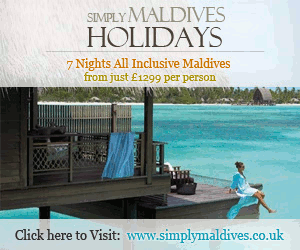With longstanding partnerships with a few major tour operators and little fuss or promotion, this resort remains a hit with the families and couples who have discovered it and recommend it. It has a tried and tested formula, and as such, the resort has changed very little over the years.
and couples who have discovered it and recommend it. It has a tried and tested formula, and as such, the resort has changed very little over the years.
An island so rich in mature palms and native trees is rare among the resorts. It is a visual feast as well as practical, for the shade between the rooms and the beach is ideal for children
is ideal for children to play in and for adults to lounge in (on deck-chairs or in hammocks) during the heat of the day.
to play in and for adults to lounge in (on deck-chairs or in hammocks) during the heat of the day.
The sand is like icing sugar still, as pumping has not been resorted to, but the extent of the beaches has diminished over the years and a couple of sections of wall have even been built to hold back the erosion. Still there is enough good beach to go around, only a little walking might be necessary if you want a wide beach.
has diminished over the years and a couple of sections of wall have even been built to hold back the erosion. Still there is enough good beach to go around, only a little walking might be necessary if you want a wide beach.
The room standards have gone up as they are nearly all newly built or refurbished and all include a safe, hairdryer and fridge. There is a telephone as well but only for internal calls. The waterbungalows have tea and coffee sachets and a cd player.
The 114 Comfort Rooms differ from the 24 Classic Rooms only in having a little bit more space, a bathtub with the shower, and air conditioning included (you must pay extra for the Classic a/c controller). They are also in blocks of 4, 2 up and 2 down. Designed to put you at your ease, the style is unpretentious and homely, which is typical of the whole resort.
The 12 Waterbungalows are the newest rooms and clearly of a higher standard. Guests enjoy a four-poster bed and comfy chairs and settee, finer quality furniture, more space and a good bathroom with a separate shower. The verandas of the beach rooms are tiled and a bit small, whereas the deck of the waterbungalows are large, wooden and in 3 parts - 1 outside the bedroom, 1 outside the bathroom and 1 platform close to the water. From here you can slip into the water for good swimming and snorkeling.
The extra rooms that have been built have put a bit of a squeeze on the best beach space and on the restaurant space. Most tables are now tables for 4 and mealtimes are busy with people passing through and noisy with cheerful hubbub and chairs scraping on the tiled floor. The variety of buffets is excellent, with a different nationality or style for every night of the week for 2 weeks. If it is not of the highest standard, there is always an alternative at the Surf Café, a small, quiet restaurant and coffee shop on the other side of the island.
The Surf Café is connected to the Blue Lagoon Bar and sits by the watersports centre and just behind a fine beach facing west. Guests naturally flock here around sunset. The bar stays open until the last guest goes to bed but it remains a quiet spot, with no music being played, as a deliberate alternative to the main Fisherman’s Bar, which has something going on every night.
The 2-week programme in the Fisherman’s Bar includes all the usual favourites from crab race to karaoke, disco and live music. Some evenings can go long into the night but generally people head off to bed fairly early. The reasons for this are the number of families who come to Fihalhohi, the general air of quiet and relaxation, and the number of guests who tire themselves out with snorkeling and diving .
.
The housereef is nearby for two-thirds of the way around the island and the coral and fish life is decent. The nearby dive spots are also decent but the sites on the other side of the atoll (still very accessible by dhoni) are some of the best known in the country, around Guraidhu, Kandooma and Cocoa. Manta rays and whale sharks are frequent in that area from September through to December.
spots are also decent but the sites on the other side of the atoll (still very accessible by dhoni) are some of the best known in the country, around Guraidhu, Kandooma and Cocoa. Manta rays and whale sharks are frequent in that area from September through to December.
Enjoying this comfortable, value-for-money family holiday
holiday are a majority of Germans and Swiss with the remaining third being British, French and Italian.
are a majority of Germans and Swiss with the remaining third being British, French and Italian.




 Adrian Neville lived in the Maldives and writes the definitive guide book: "Resorts of Maldives", now in its fifth edition. Having tirelessly reviewed every single resort, he is now continually asked ‘which is the best Maldives Hotel for my
Adrian Neville lived in the Maldives and writes the definitive guide book: "Resorts of Maldives", now in its fifth edition. Having tirelessly reviewed every single resort, he is now continually asked ‘which is the best Maldives Hotel for my